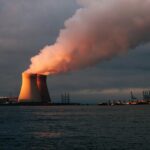University of Calgary Scientist David Keith Cracks Carbon Capture Conundrum
A University of Calgary research team has developed a new method for extracting carbon dioxide (CO2) directly from the air — a fundamental shift in carbon capture technology enabling capture of the most common greenhouse gas from so-called diffuse sources like aircraft, trucks and automobiles that represent half of the greenhouse gases emitted globally.
Professor David Keith, Director of University of Calgary’s (UofC) Institute for Sustainable Energy, Environment and Economy (ISEEE) and a team of researchers from UofC’s Energy and Environmental Systems Group built and operated a prototype system this summer producing results that compared favourably with commercial carbon capture systems. Two ‘provisional’ patents have been filed on the technology but Keith warns there are still “many pitfalls along the path to commercialization.”
Using a process adapted from the pulp-and-paper industry that halves the cost of CO2 air capture in their custom-built tower, Professor Keith and his team captured the equivalent of about 20 tonnes per year of CO2 (approximately equal to the yearly output of one person in North America) directly from the air with less than 100 kilowatt-hours of electricity per tonne of carbon dioxide on a single square metre of scrubbing material.
“This means that if you used electricity from a coal-fired power plant, for every unit of electricity you used to operate the capture machine, you’d be capturing 10 times as much CO2 as the power plant emitted making that much electricity,” explains Professor Keith.
A report co-authored by Keith in the American Chemical Society’s journal Environmental Science & Technology explains “nearly all current research on carbon capture and storage (CCS) focuses on capturing CO2 from large, stationary sources such as power plants. Such plans usually entail separating CO2 from flue gas, compressing it, and transporting it via pipeline to be [stored] underground.”






















